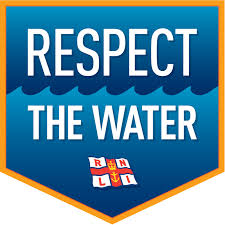 When most people think of lifeboats they have images of dark and stormy nights, Grace Darling battling huge waves and dramatic launches from seaside slipways. It may be surprising then, to realise that the busiest lifeboat station in the UK is on the river Thames at Tower Bridge, with the other three Thames stations at Chiswick, Gravesend and Teddington being the next busiest. The Thames has had its own lifeboats since 2001 when a safety enquiry following the Marchioness disaster saw the establishment of Tower Bridge station. Uniquely, the Thames stations are manned permanently and vessels are required to be afloat within 90 seconds of being notified of an incident. Chiswick has 3 E-class inshore boats that were designed specifically for the conditions on the Thames: the Chelsea Pensioner (E-003), the Joan and Kenneth Bellamy (E-006) and Dougie and Donna B (E-008). E-class boats are the fastest vessels in service with the RNLI and can reach up to 95% of casualties between Canvey Island and Teddington within 15 minutes.
When most people think of lifeboats they have images of dark and stormy nights, Grace Darling battling huge waves and dramatic launches from seaside slipways. It may be surprising then, to realise that the busiest lifeboat station in the UK is on the river Thames at Tower Bridge, with the other three Thames stations at Chiswick, Gravesend and Teddington being the next busiest. The Thames has had its own lifeboats since 2001 when a safety enquiry following the Marchioness disaster saw the establishment of Tower Bridge station. Uniquely, the Thames stations are manned permanently and vessels are required to be afloat within 90 seconds of being notified of an incident. Chiswick has 3 E-class inshore boats that were designed specifically for the conditions on the Thames: the Chelsea Pensioner (E-003), the Joan and Kenneth Bellamy (E-006) and Dougie and Donna B (E-008). E-class boats are the fastest vessels in service with the RNLI and can reach up to 95% of casualties between Canvey Island and Teddington within 15 minutes.
The Thames is a dangerous place. The tide can rise and fall up to 24ft twice a day and hide all sorts of submerged hazards as well as create treacherous currents and dangerous mud. The average water temperature is 12C (54F); cold water shock can occur at any temperature below 15C (59F). 34 people died in the river between 2000 and 2014. It doesn’t help that charming riverside pubs can create not-at-all-charming drunks who either fall in or think that they are invincible and can swim in all conditions.
Chiswick came into operation in January 2012. Up until the end of 2017, crews had attended 3,328 incidents and rescued 1,707 people, some of whom would otherwise have died.
The dangers aren’t just faced by humans but by dogs too. Involuntary ingestion of river water and the dangers of being infected by leptospirosis (Weill’s disease) can kill dogs and humans. Even the strongest swimmers can and do get swept away by the tide and can get trapped in a variety of hazards by unexpected currents that may not be visible from the bank. Already this year, the Chiswick station, operating between Richmond half lock and Battersea, has been called out for the seventh time to rescue a dog. Crews have also had to rescue handlers who try to retrieve dogs from the water and, as with the seashore, can be in greater danger than the dog that they are trying to bring in. Even if dogs don’t enter the water voluntarily, they can and do fall in not least when banks are slippery with weed and mud (and that’s the polite description, at least until the Thames Tideway becomes operational).
This is what happened when two dogs and their handlers got into difficulty on the Thames this summer.
There were a total of 132 lifeboat launches to dog walking incidents in 2015, with 119 handlers being rescued.
Don’t let yourself or your dog add to the statistics. Respect the water, keep your dog on the lead and/or get a canine lifejacket*. Don’t let your dog swim in the Thames or other tidal waters and make sure that there is no danger from algal blooms and similar in running or still water.
Never go in after your dog.
If your dog does get into difficulties, call 999 or 112 and ask for the Coastguard and keep yourself safe and, if necessary, warm.
Chiswick lifeboat station costs £495,000 per annum to run. The RNLI is completely independent of government and relies on volunteers and fundraising to operate. You can support Chiswick or any other part of the RNLI by taking part in a regular event such as SOS day at the end of January or National Lifeboat day in May or local events or by making a purchase from the RNLI shop* . Drop some change or even notes, into a tin. Even a small donation can help with the annual running costs.
Most of all, you can help by keeping yourself and your dog safe around water.
* CreDO and DogsNet.org do not take responsibility for products advertised on or purchased from third party websites.